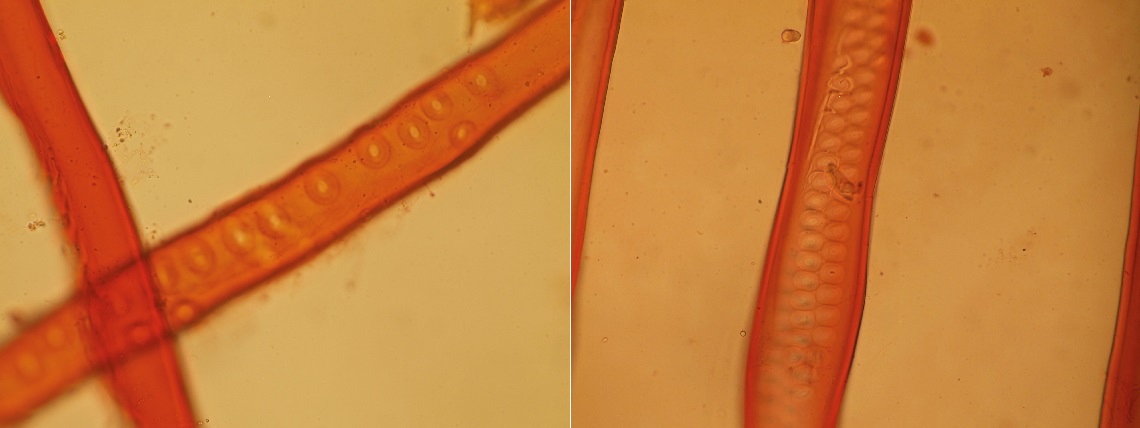Simple equipment—a common, binocular microscope attached to a digital camera—and a little work to macerate and separate the cells are all it takes to determine whether a sawdust sample comes from Araucaria angustifolia, a native species that it is illegal to cut down. It can thus be distinguished from Pinus spp. and Eucalyptus spp., both exotic trees whose cultivation is permitted and with which it is commonly confused. Three botanists—Thais Oliveira and Eduardo Longui from the Institute of Environmental Research (IPA) and Marina do Amaral from the São Paulo Technical/Scientific Police Superintendence (SPTC)—identified differences between cell fragments in wood and bark sawdust that can indicate the genus and in some cases, the species. In Araucaria and Pinus, the wood cells, responsible for water conducting and sustenance, are very long and thin. In Eucalyptus, two types of cells predominate, those for conducting water, which are shorter, wider, and perforated at the ends, and those used for sustenance, which are the fibers. Another difference are the so-called pits, lateral interruptions of the cell walls through which water passes. In Araucaria, the pits are distributed in multiple alternating lines along the cell in a polygonal shape. In Pinus, the pits generally form a single line and when there is more than one, they are opposite each other and circular in shape. The distinctions could help solve environmental crimes, when Araucaria is claimed to be another species (Revista Brasileira de Criminalística, January).

Thais OliveiraMicroscopic image of wood cells from Araucaria (left) and Pinus (right)Thais Oliveira
